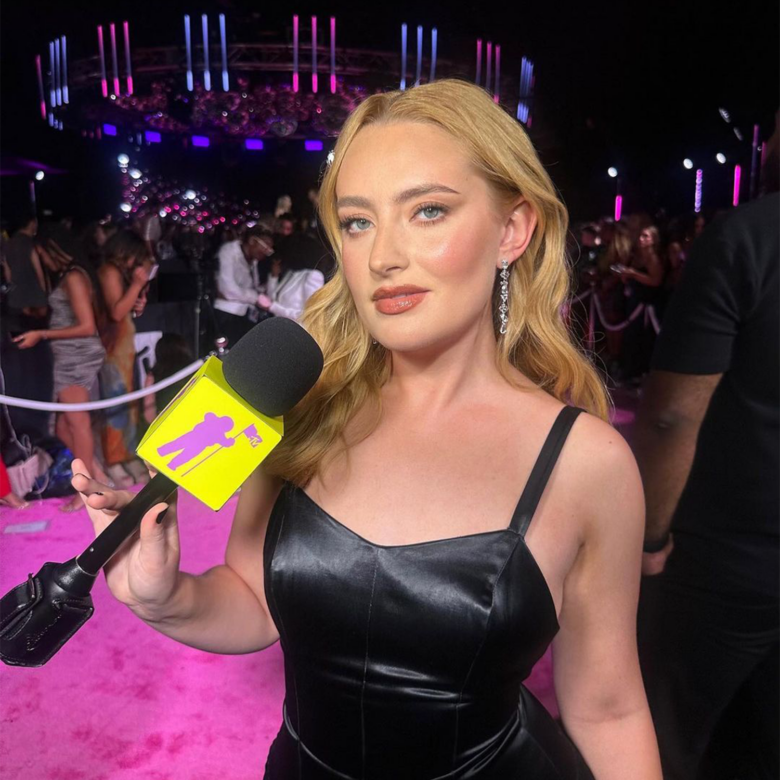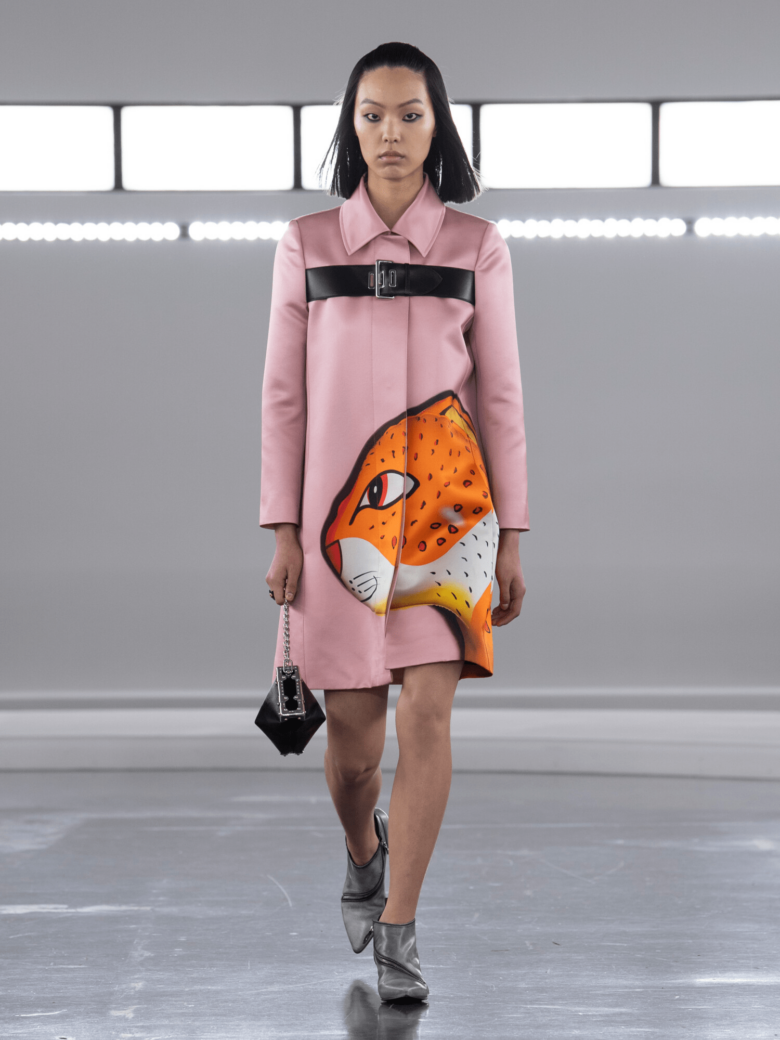“I want it to be confrontational”: George Rouy on the homogenisation of art and leaving London
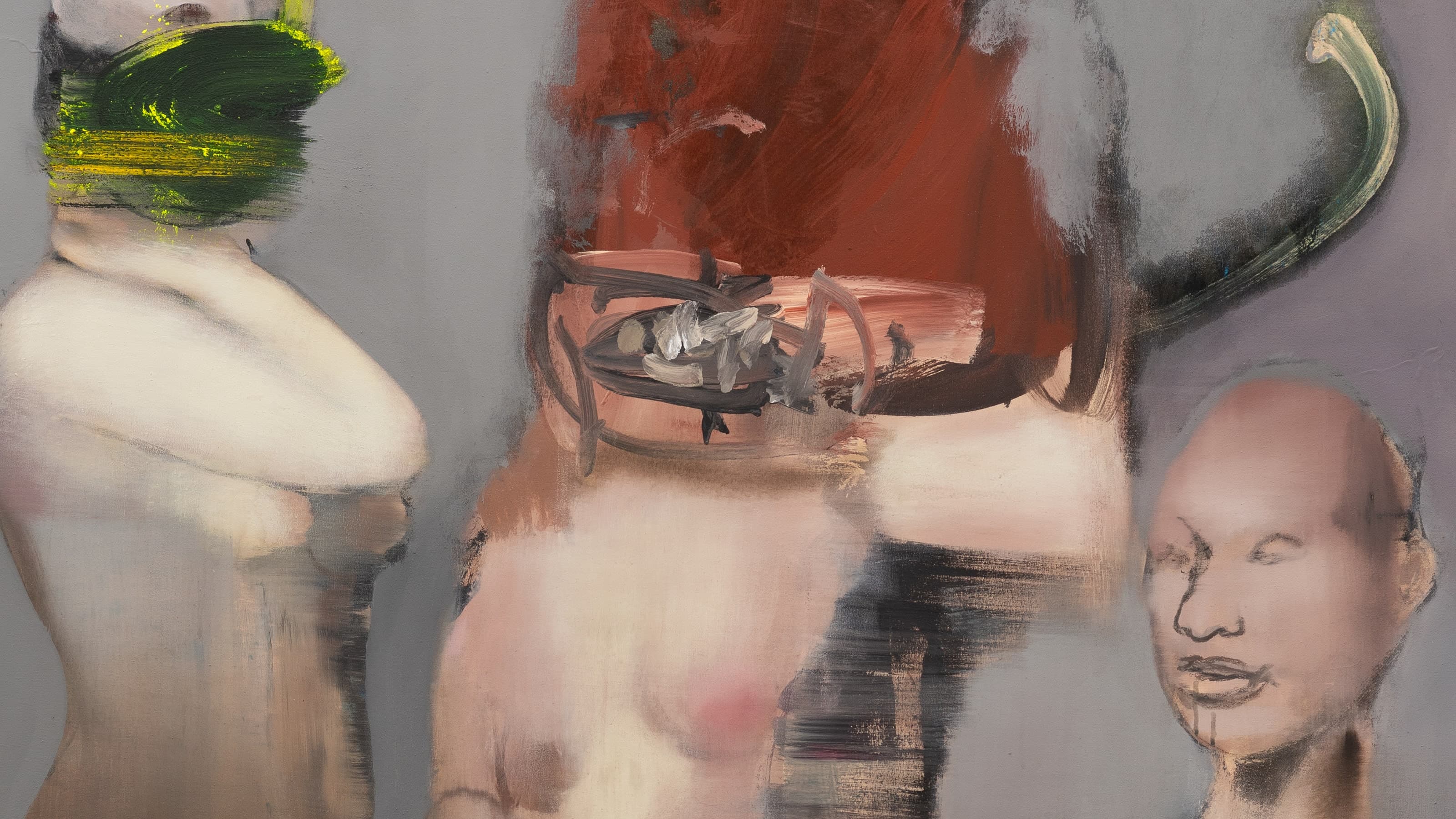
Hazy and mysterious nude bodies are at the centre of George Rouy’s paintings, a young British artist known for creating figurative large-scale acrylic canvases. “My mum comes up quite a lot,” he tells me when I ask if his figures are based on existing people, “but in a very subtle way. Although some of [the figures] are a nod to real people, it isn’t a conscious decision. I think it would be disruptive to link [the figures] to real life.”
Described as one of this generation’s most promising painters, his process is a mix of both intuition and discipline, the latter a surprisingly important factor when, say, having an increasing amount of deadlines due to high demand. “I’m very busy painting at the moment. It’s actually a little lonely. But I’ve always been disciplined. I used to work in a factory and I quickly realised that if I wanted to get things moving I needed to put in the time and effort to achieve what I wanted to achieve. I would love to be able to just walk in and know how to do everything but it takes time to figure out your process.” None of it, however, would be possible without intuition, which he mentions multiple times throughout our conversation: “You get to a point [in your career] where everything just clicks and you feel in control, no more stress or anxiety. But the paintings are always changing and morphing, which is subconscious” he explains. “And I try to keep this subconscious and intuitive element as a sacred part that I don’t try to analyse or think about too much. I like that intuition is essential yet vague and not easily defined.”
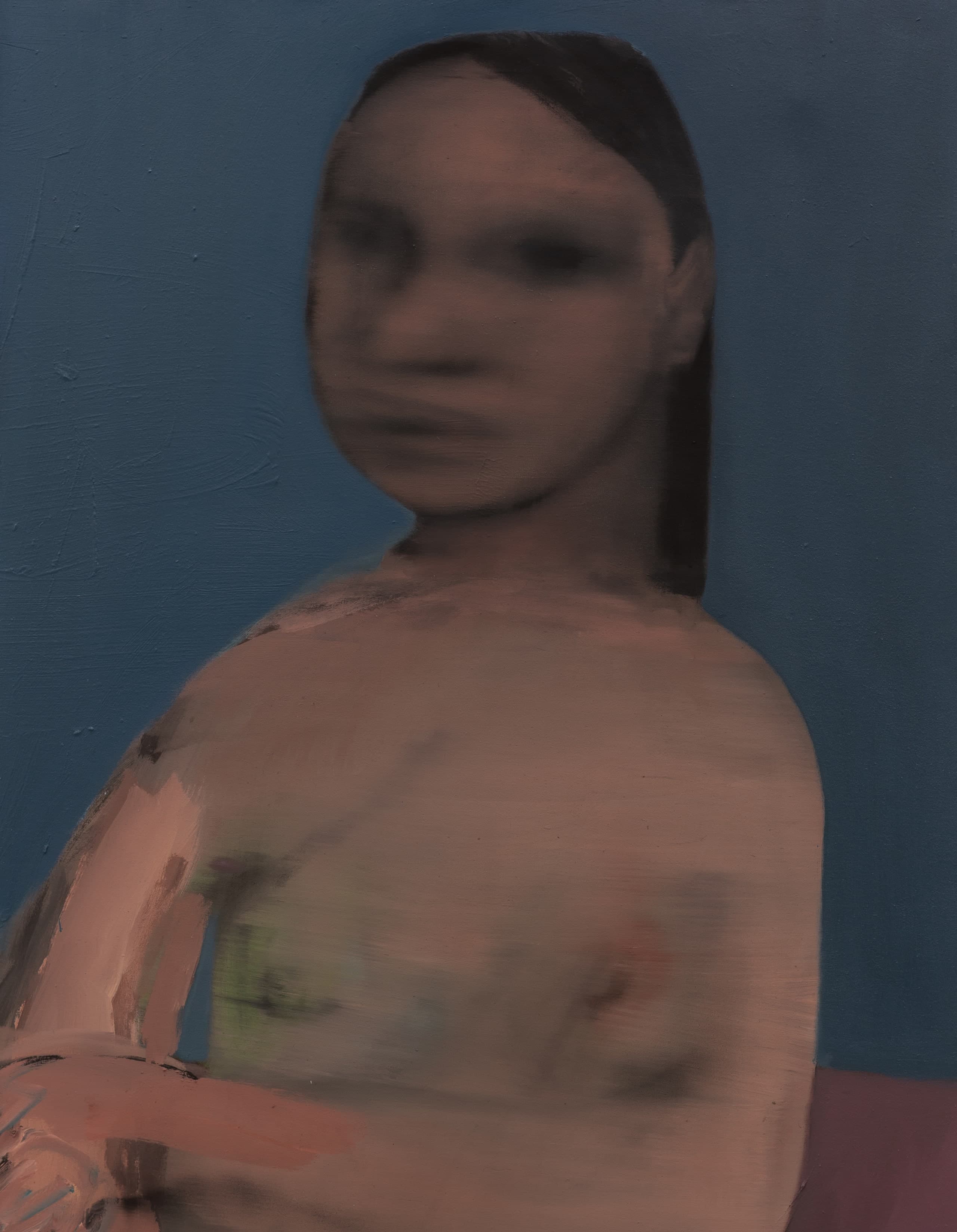
Rouy currently lives and works in an abandoned church in Kent, where he is originally from, and went to Camberwell College of Art in London before his first solo show in 2017. During his time at university, he spent a lot of time experimenting – “you do what you want and you see what sticks” – but his true love was always figurative painting, despite trying mediums like sculpture and casting.
“When I left [Camberwell College of Art] I went back to what I loved and started from the ground up again. By that time, the need and desire for figurative painting was more present and I felt that, unlike at uni, it was becoming more accepted”. Despite having spent a lot of time in London over the years, his relationship to the city has changed. Nowadays, he chooses to spend as much time as he can in Paris: “I feel like my time in London has passed, at least for now. I’m actually between Paris and Kent at the moment and would love to get a studio there. [Paris] is quieter and has better energy [than London]. It feels like a little village and there is so much more to see there. I am constantly going to galleries. My surname is French actually – they all say ‘roo-ee’”.
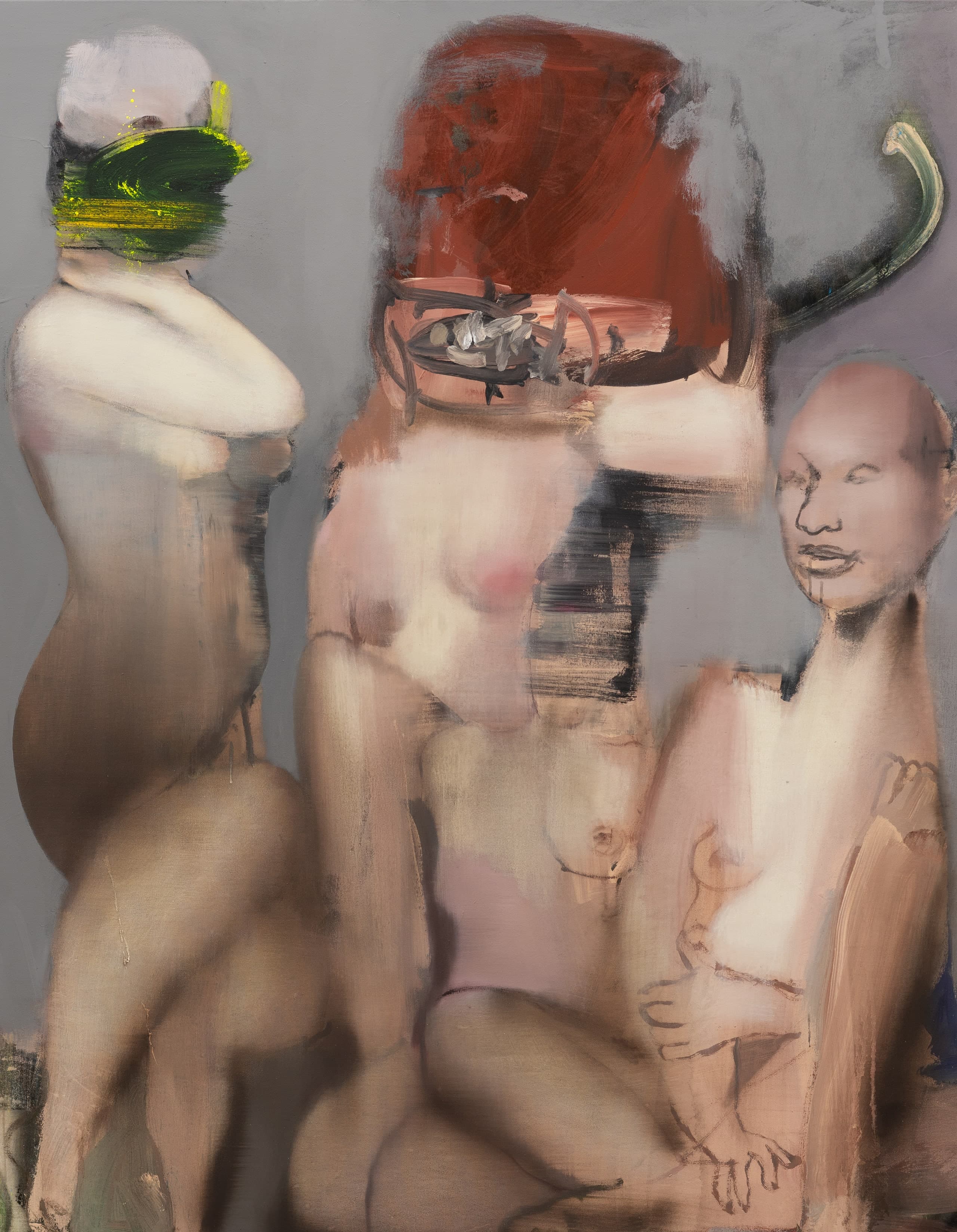
As well as being a painter, Rouy has a deep love of music – “I listen to everything, it’s almost obsessive. I also used to be in a band” – and over the years has worked with many famous names in the fashion industry, such as Juergen Teller and Hedi Slimane and also recently modelled for Miu Miu. But he insists that art has always been his true love, finding inspiration from a multitude of sources, such as medieval French and Dutch painting, as well as the work of Israeli choreographer Sharon Eyal: “I discovered her about four years ago and I was just taken aback by the energy of her work. It is entirely based on figure movement and interaction; a stripped-back, minimalist, intuitive dance with no direct narrative, just a sequence of events. Back [when I discovered her] it was a pivotal moment for me. I was stepping into another realm and removing all the clutter to focus directly on the figure and how it exists in relation to the space and the marks on the canvas. It was all linked. And when I met her,” he continues, “it also turned out that she knew my work so there was this natural connection. We continually talk about some kind of collaboration and I’ve even joined in one of her sessions which was very meditative, connecting every part of the body in a series of movements.”
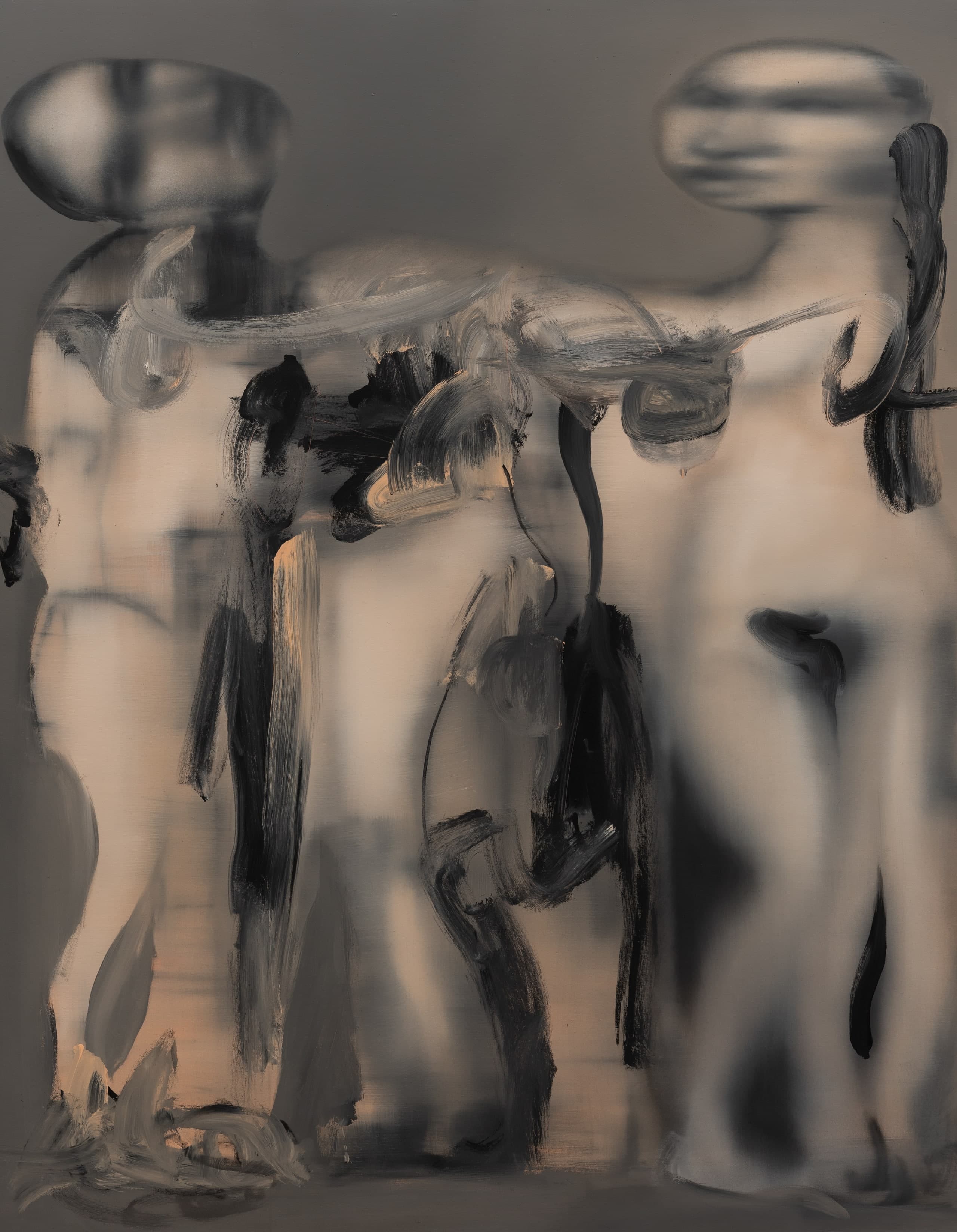
As well as the body and its primal qualities, a topic Rouy explores repeatedly in his art is contradiction, a “push and pull” effect that he says is essential: “I am constantly flirting with [contradiction]. It’s the basis of my approach and my work exists best when it exists between two realms: beautiful/ugly, emotional/non-emotional, figurative/abstract… where does it sit? For me, there is a clear and obvious path when the work is sitting right, usually followed by a series of events before that where it just doesn’t.” And how important is the viewer’s interpretation of his artwork? “I ask myself: can they enter it? You need to have entry points. The colour, the size… they all have a part to play. Not that much is going on; there is only a set amount of decisions and a set amount of information – that’s it. But whatever the information is, it has to be potent and lead you on.” By looking at his paintings, you also notice that the figures are looking straight at the viewer which, he explains, is a deliberate choice: “when my figures look away it loses its magic and becomes voyeuristic. They need to engage with the viewer. I want it to be confrontational.”
The final topic I want to address is social media: does he think it can homogenise art? “Yes, it can. People tend to be very stylistic. They feed off each other and test things out, which is normal. But there is a moment where you have to look at the bigger picture. I am interested in shifting and moving things, reinventing and making changes. And it needs to maintain a form of excitement for it to last.” Whatever the direction his art will take, his intuition will undoubtedly have a big part to play in it.
